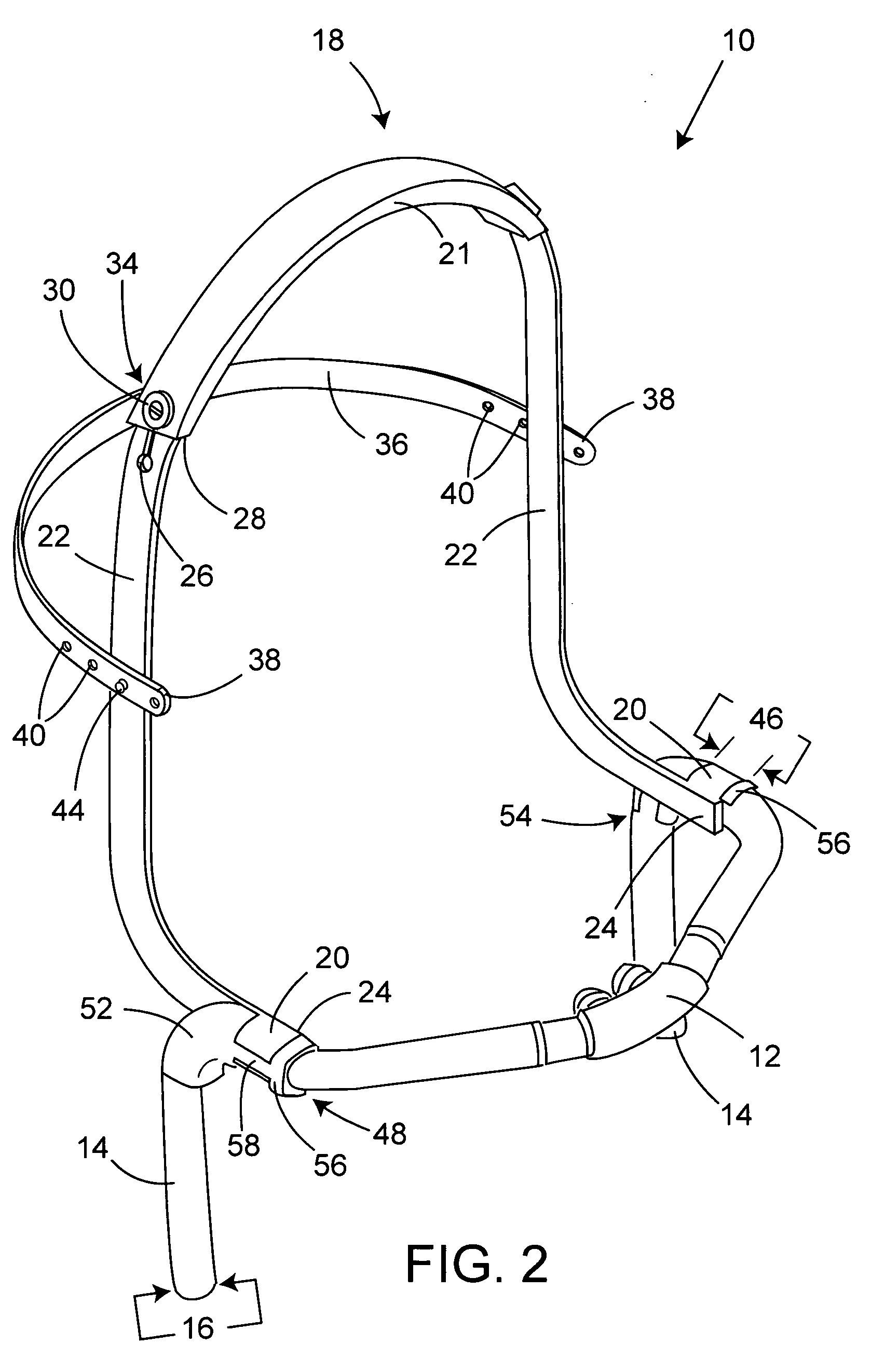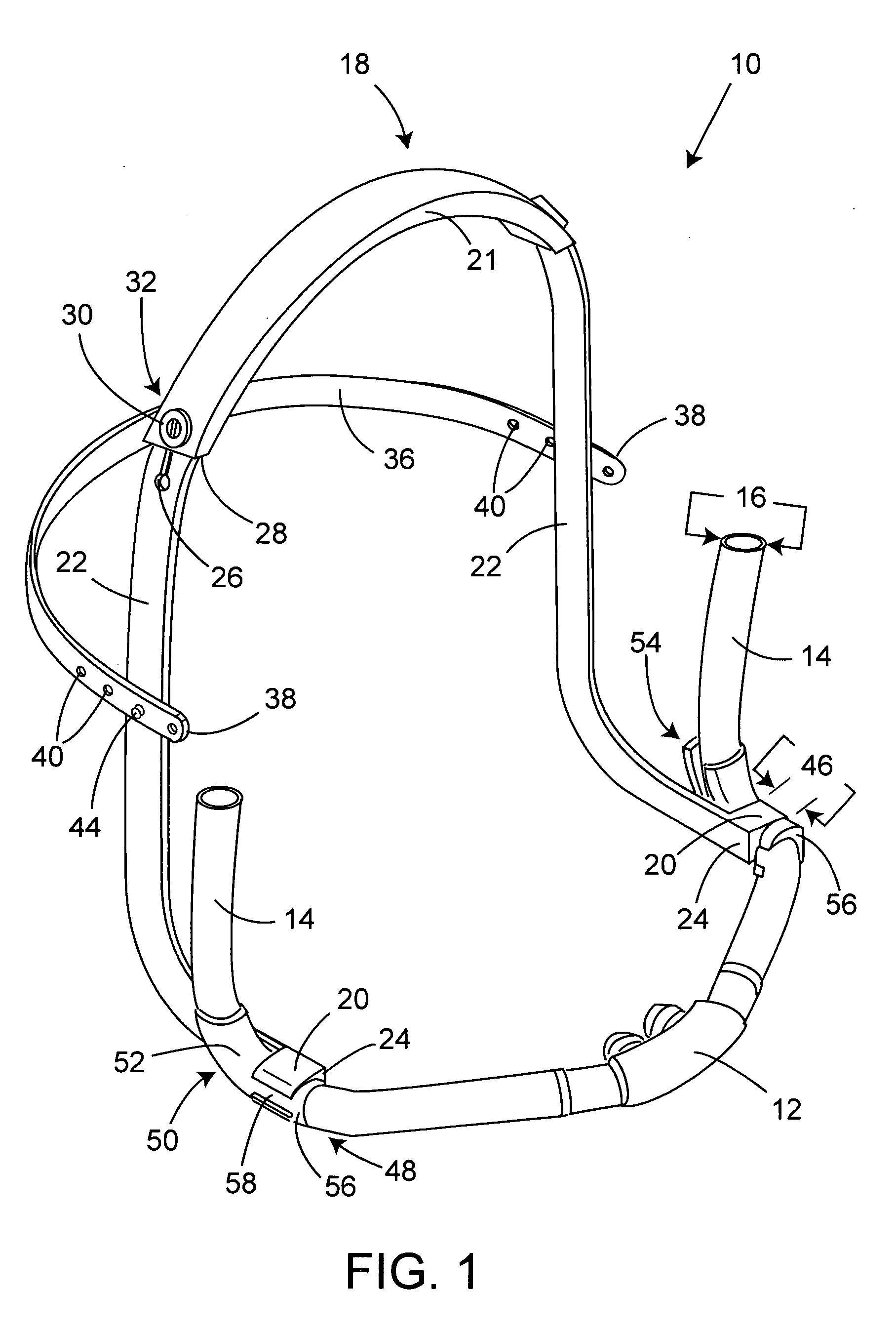Headgear for noninvasive ventilation interface
a ventilation interface and headgear technology, applied in the field of adjustable, semi-rigid headgear, can solve the problems of significant patient discomfort and irritation, headgear used with these interface devices, harnesses, headbands,
- Summary
- Abstract
- Description
- Claims
- Application Information
AI Technical Summary
Benefits of technology
Problems solved by technology
Method used
Image
Examples
Embodiment Construction
[0020]In the following description, terms such as horizontal, upright, vertical, above, below, beneath and the like are used solely for the purpose of clarity in illustrating the invention and should not be taken as words of limitation. The drawings are for the purpose of illustrating the invention and are not intended to be to scale.
[0021]Referring to the drawings and first to FIGS. 1 and 2, a headgear for noninvasive ventilation interface 10, comprises a nasal cannula 12 including cannula tubing 14 having a given outside diameter 16; and a headgear yoke 18 with ends including cannula tubing retainers 20. In particular, headgear yoke 18 includes a top section 21 and side sections 22 with lower ends 24. Moreover, headgear yoke 18 includes spaced index notches 26 near the top end of at least one of its side sections 22 along with at least one side section receiving slot 28 within yoke top section 21. The yoke top section 21 also includes at least one index notch lock 30 having an unl...
PUM
 Login to View More
Login to View More Abstract
Description
Claims
Application Information
 Login to View More
Login to View More - R&D
- Intellectual Property
- Life Sciences
- Materials
- Tech Scout
- Unparalleled Data Quality
- Higher Quality Content
- 60% Fewer Hallucinations
Browse by: Latest US Patents, China's latest patents, Technical Efficacy Thesaurus, Application Domain, Technology Topic, Popular Technical Reports.
© 2025 PatSnap. All rights reserved.Legal|Privacy policy|Modern Slavery Act Transparency Statement|Sitemap|About US| Contact US: help@patsnap.com



